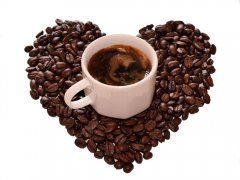Can coffee prevent skin cancer? Review of the experimental process

Erikka Loftfield, lead author of the study and a member of the National Cancer Institute, said that while the findings are encouraging for coffee drinkers,"it's not that people should change their coffee drinking habits," but "it's important to reduce sun and UV exposure to reduce risk."
"Our results, and other recent studies, have reassured coffee lovers that drinking coffee is not a risky business." Loftfield told LiveScience in an email,"However, our findings do not suggest that everyone should change their coffee drinking habits."
Review of experimental process
Previous studies have found that coffee consumption reduces the risk of malignant melanoma. Melanomas form in pigmented cells called melanogenic cells. According to the National Cancer Institute, 9710 patients died of the disease in 2014 and 76100 new cases were diagnosed.
Loftfield and her team analyzed a large amount of data from a joint National Center for Health Research and American Association of Retired Persons follow-up study that followed 447357 retirees for ten years. In the end, there were 2904 patients with malignant melanoma (cancer cells that had spread deep into the skin) and 2874 patients with early-stage melanoma (cancer cells that remained on the surface of the skin). "Our study is by far the largest and most valuable study of the relationship between melanoma and coffee," Loftfield said.
Participants provided information about their daily coffee consumption, as well as other risk factors such as exercise, alcohol intake and body mass index. To measure the participants 'UV exposure, the researchers measured the amount of light NASA received at each person's residence.
Important Notice :
前街咖啡 FrontStreet Coffee has moved to new addredd:
FrontStreet Coffee Address: 315,Donghua East Road,GuangZhou
Tel:020 38364473
- Prev

The history of coffee beans originated in Africa. The specific process is as follows.
Legend has it that around the tenth century AD, on the Ethiopian plateau of Africa, a shepherd Carl found sheep excited after eating some kind of red fruit. As a result, Carl distributed this incredible red fruit to the locals, and its magical effect spread. There is also a legend that in 1258 AD, in the mountains of Yemen, people were killed for crimes.
- Next

Drinking coffee after drinking to speed up the metabolism of alcohol and eating six kinds of food is the best way to relieve alcohol.
What kind of food is the most antialcoholic after being drunk? As the Lunar New year is getting closer and closer, many urban office workers will have all kinds of parties at this time. It's hard to avoid drinking at this time. What should I do if I get drunk? Today, the editor will take an inventory of what is the best to drink and eat for everyone, and don't miss it. What kind of eggs to eat for drinking? Eggs are rich in cysteine and have detoxification.
Related
- Beginners will see the "Coffee pull flower" guide!
- What is the difference between ice blog purified milk and ordinary milk coffee?
- Why is the Philippines the largest producer of crops in Liberia?
- For coffee extraction, should the fine powder be retained?
- How does extracted espresso fill pressed powder? How much strength does it take to press the powder?
- How to make jasmine cold extract coffee? Is the jasmine + latte good?
- Will this little toy really make the coffee taste better? How does Lily Drip affect coffee extraction?
- Will the action of slapping the filter cup also affect coffee extraction?
- What's the difference between powder-to-water ratio and powder-to-liquid ratio?
- What is the Ethiopian local species? What does it have to do with Heirloom native species?

